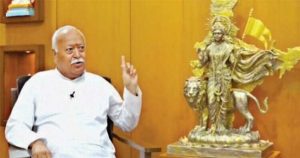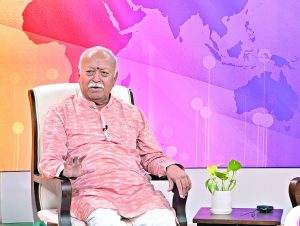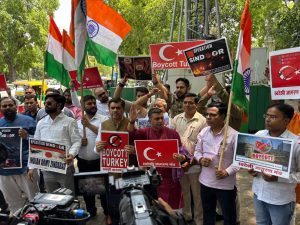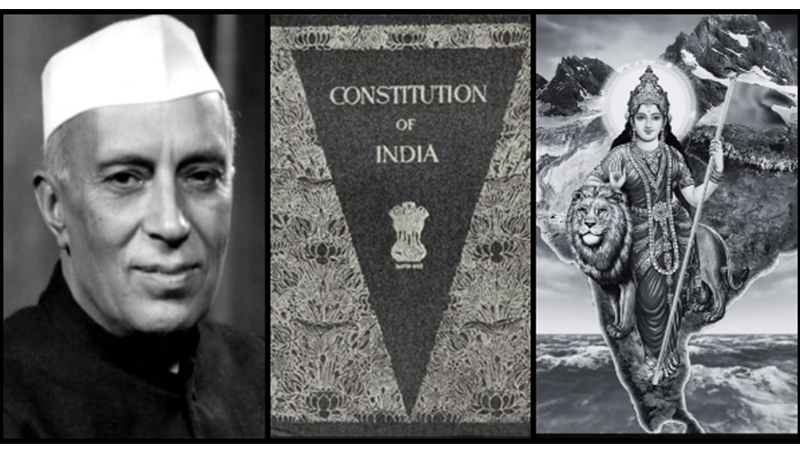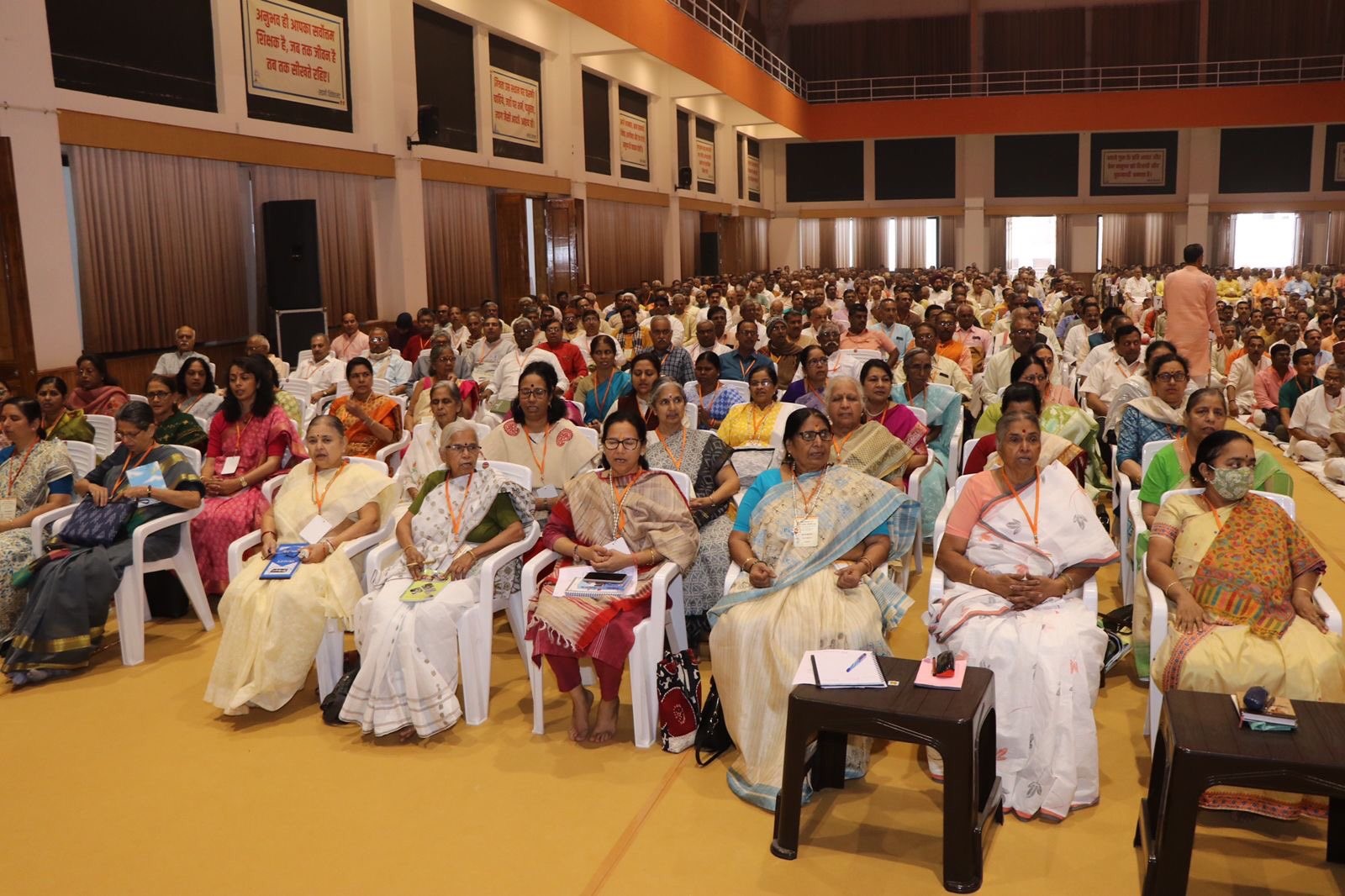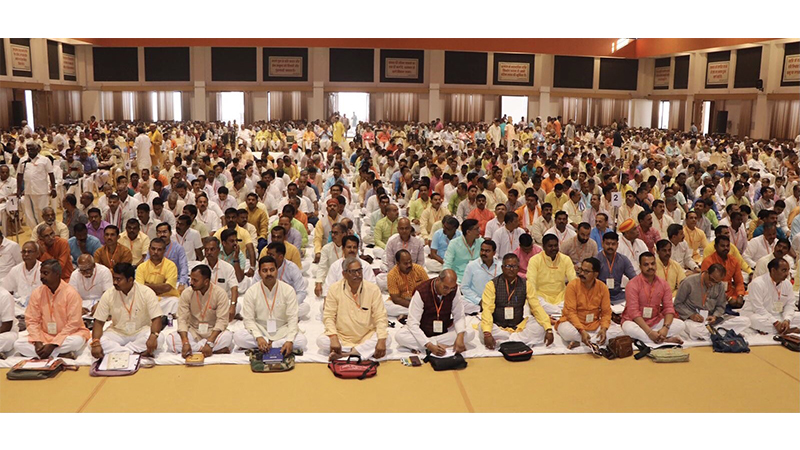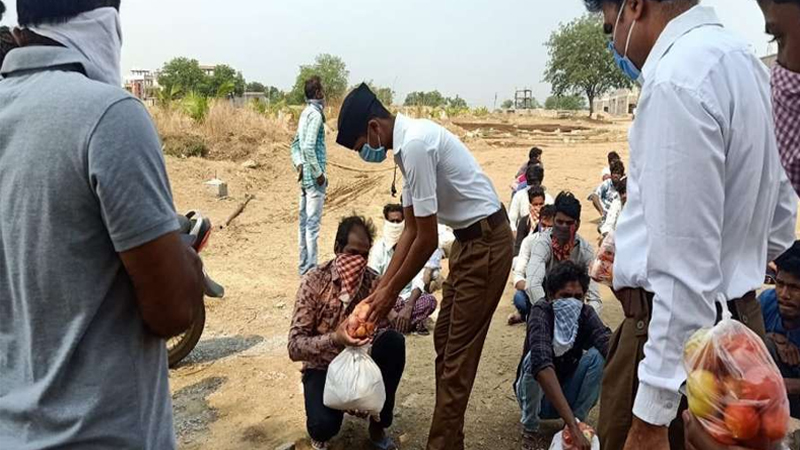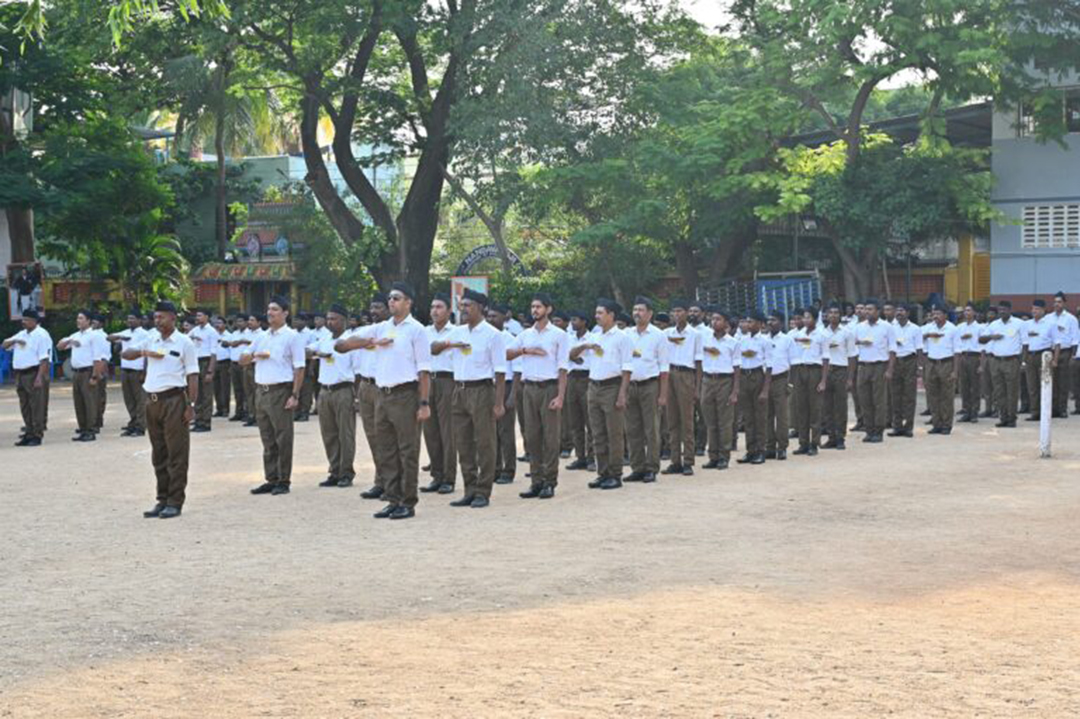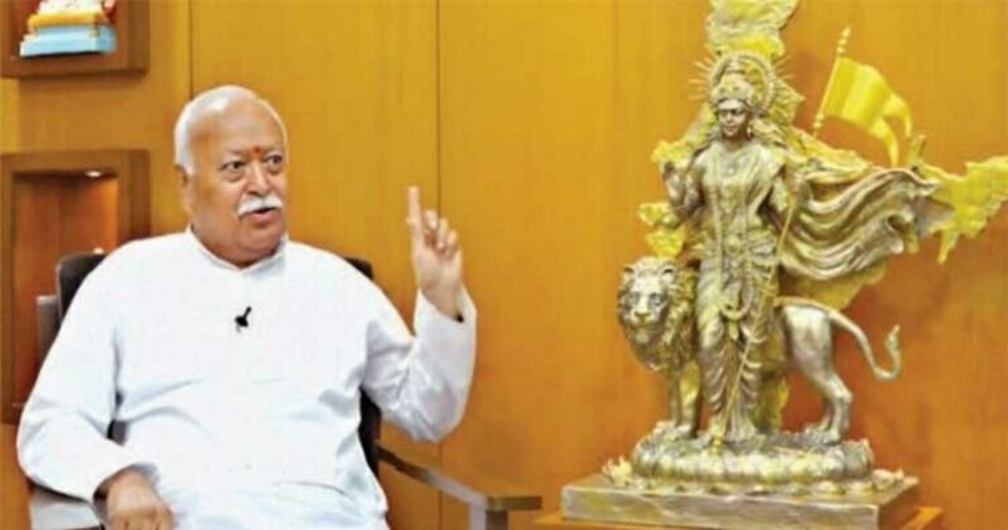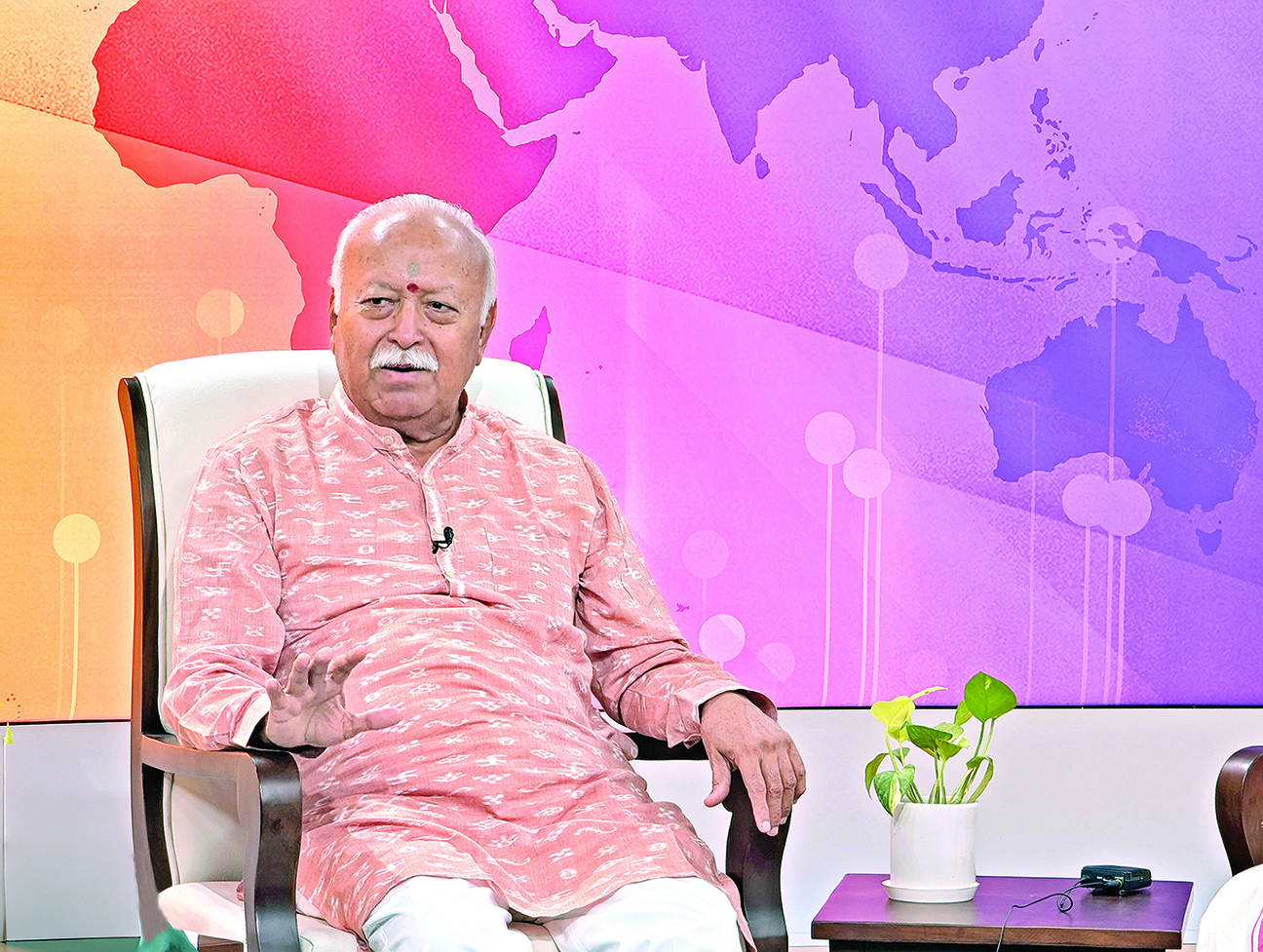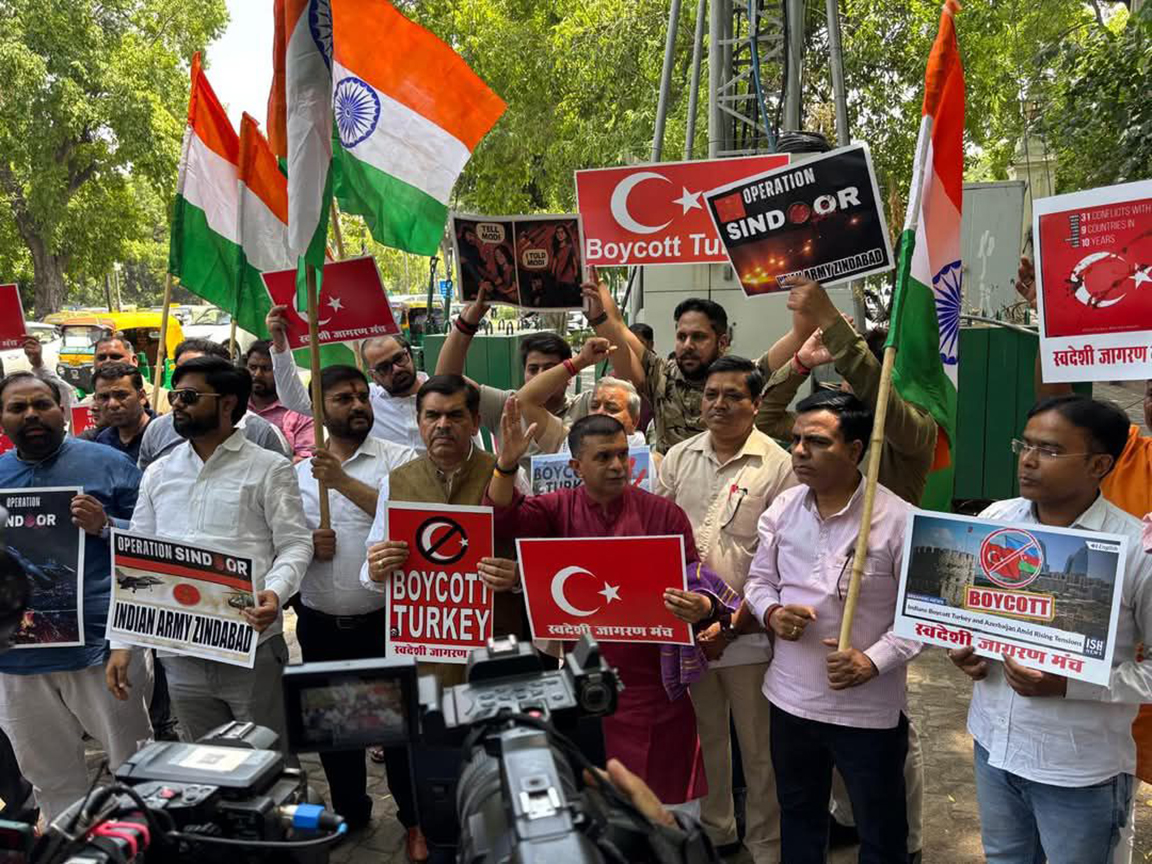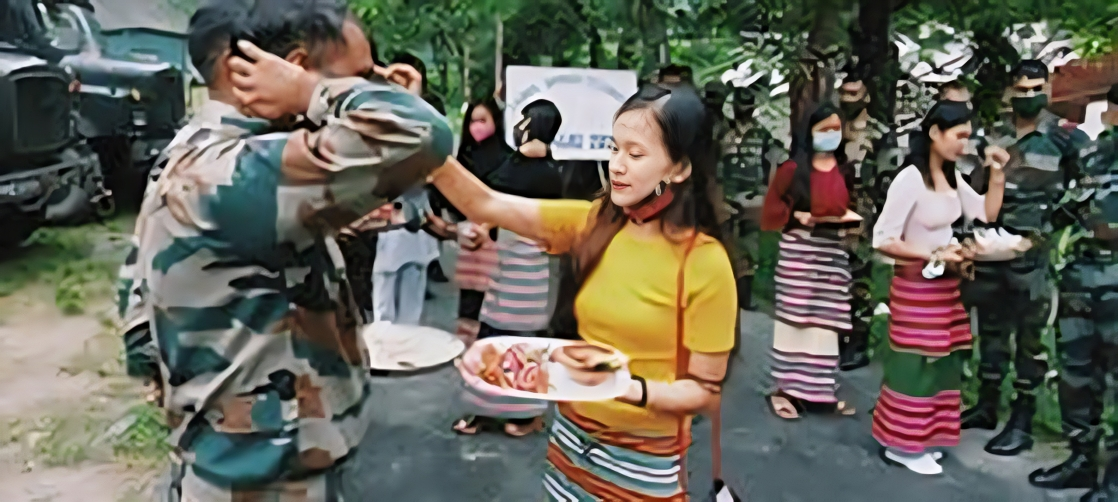Declaring tribals as non Hindus shows lack of understanding of Bharat
Updated: February 1, 2023 13:34
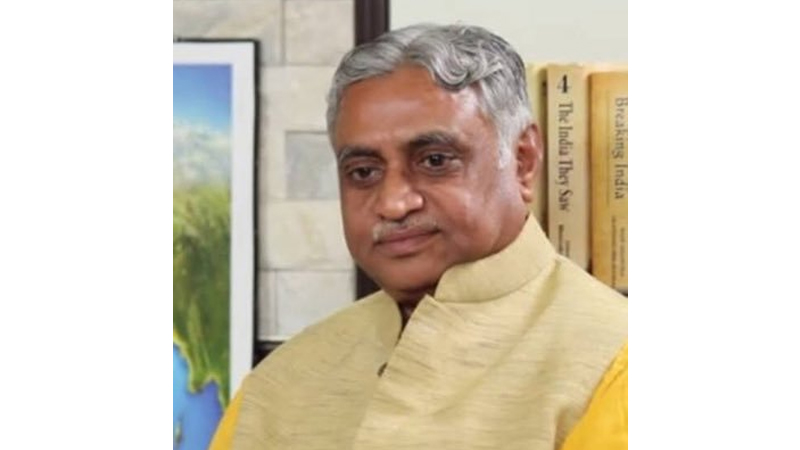
It is not mere coincidence that Jharkhand and Andhra Pradesh that are at the epicentre of the activities which form the subject matter of this write-up, have been hotspots of conversion activities.
The Jharkhand state government recently passed a bill with majority that deems Sarana Dharma followers as non-Hindu and claims “Sarana” to be a separate religion. At around the same time Andhra Pradesh government declared that with the view that the members of Scheduled Tribes are non-Hindu they will be listed as just “Scheduled Tribe” in the 2021 census. These developments are an indicator of a lack of realisation of Bharat and correct understanding of Hindutva (Hinduness), which is combined with an insatiable hunger for political power on the part of these decision-makers. Hindutva is not some religion. Even the honourable Supreme Court of the country honoured and established the fact that it is a view of life. One hallmark of this view of life is that it is based in spirituality. Notwithstanding language and worship-related differences, countless lineages of people born in the Bharatiya sub-continent have identified themselves as Hindu from time immemorial. Deep identification with this view of life has led to a distinct outlook and personal character of these people.
“Truth is one, but the wise call it by different names.” This shloka from the Rig Veda means the truth or god is one but there may be many paths to its realization and all paths are equal. This tenet of the Hindu view of life was well-ingrained in the Hindu psyche and the people here have been practising this for long. Jews, Parsis and Syrian Christians fleeing religious persecution and conversion in their countries of origin sought asylum in different kingdoms of Bharat, at various points in time. The itinerants, though ethnically, religiously and linguistically alien here, the treatment given by the kings or the locals who granted them asylum were equally liberal and respectful. They were welcomed, accepted and nurtured within each of those geographies. This behaviour was an outcome of their adherence to the Hindu view of life. To see unity in diversity is the hallmark of this view of life. We’ve held that one Spirit (Chaitanya) manifests in different life forms and therefore the ability to see the underlying oneness among seemingly apparent diversities is the default view of Bharat. This is why diversity is not perceived as differences here. Bharat has the unmatched capacity to take all the apparently diverse expressions together while protecting the uniqueness of each of those units while assimilating them into one cohesive whole. The third uniqueness of Bharat is the recognition of the fact that every soul (man or woman) is potentially divine. The very goal of human life is to manifest the divinity within to ultimately merge with the Supreme Divinity. Different people may walk different paths to manifest their divinity and each of those paths may be called their religion or faith. The body of thought with an amalgamation of these unique qualities has been popularly perceived as “Hindutva” around the world. Whether someone refers to it as Bharatiya, Sanatan, Indic or any other name, the essence is the same.
Now the question is which among these unique features is un-relatable or offensive to the Sarana people or other Scheduled Tribes?
The first President of independent Bharat, Dr S. Radhakrishnan referred to Hindutva as “Commonwealth of All Religions”. Swami Vivekananda in his 1893 Chicago address at the World Parliament of Religions described Hindutva as the “Mother of all religions”.
The view that sees diverse people as one, that accepts and assimilates different paths and faiths is what Hindutva is. This civilisation that predates 10,000 years has seen people worship different deities at varied points in time. To be able to keep pace with evolving faith-based norms and to accept changes is what Hindutva is all about. Swami Vivekananda propounded this very fact by reciting this shloka in his famous 1893 Chicago address.
Meaning: O Almighty! Innumerable paths lead one to you—Sankhya, Vaishnav, Shaiva, Vedic ways of life, etc. As per their orientation people choose any one path, but like many rivers eventually converge into one sea, all these paths lead to the same, Eternal Truth. It is true that regardless of the path we choose we can all realise the Divine.
The beauty of this Bharatiya view of life is that it recognises the fact that in tandem with man’s continuous evolution he is sure to discover and worship newer deities. Nurturing the old while making space for newer deities is Hindutva.
Gurudev Rabindranath Thakur explicitly stated: “To experience unity in diversity and to establish unity amongst variety—this is the inherent Dharma (the spirit) of Bharat. Bharatvarsh never interpreted diversities as hostility and, neither considers the outsider as an enemy. Thus, without sacrificing our own, without destroying others, Bharat aspires to assign a distinct place to everyone in one vast ecosystem. Thus, it is willing to accept all ways of life, and acknowledges the greatness of each in its own way.
“As Bharatvarsh possesses this trait, we would never get frightened by visualising any society as our opponent. With every new dissension, we inevitably will grow. The Hindu, Bauddha, Muslim and Christian would not fight with each other and die in Bharat. Rather they would find a balance, a meeting point here. This balance will not be non-Hindu, but very specifically Hindu. However foreign may be its body parts, its life and spirit will of Bharat.”
This holistic approach and assimilation are intrinsic to the Hindu view of life. Given this definition, what deems Sarana and Scheduled Tribe members as radically distinct from Hindutva is a mystery. Because Hindutva does not emphasise on the Almighty to be one definitive form, rather appreciating the common thread underlying all manifestations of the Divine is Hindutva.
Some years ago, a survey was conducted in North-Eastern states in the Assam region that has a sizable population of the Scheduled Tribes. Representatives of 18 Scheduled Tribes present at the conference expounded their responses over: 1. Their concept of God. 2. Their view of Earth. 3. What do they pray for? 4. Their concepts of virtue and sin. 5. Their opinion over faith-based practices of those from other religions. And lastly, 6. If they wish to compel followers of other faiths and religions to forcefully convert to their religion.
Their responses were consistent with the views of a common Hindu living elsewhere in the country. It was surprising for the surveyors to note that despite apparent language differences their beliefs are more or less similar and reflective of the age-old spiritual tenets of the Hindu belief system. That which unifies the diverse religious and faith-based beliefs and practices of this geo-cultural unit of Bharat is Hindutva and our spirituality-centric holistic, unifying and all-encompassing Hindu view of life.
The Semitic basis of Abrahamic religions like Christianity and Islam prevents those religions from having a similar view of human life. In fact those religions divide the human race into binaries, which cannot coexist in harmony. It is for the same reason that these religions have a bloody, violent, deceptive and greed-ridden history of conversion. Among the tribals of the North-Eastern states of Bharat also the Christian Church propaganda to impose the view that those tribes are non-Hindu has been underway for a long time now, first with the support of the British colonial ruler and later by those in power after our Independence. This is the direct cause of the emergence and strengthening of separatist militant groups in the region. As part of their agenda, they lured the people of the land with the temptation of a new and separate identity and uprooted their cultural roots to start “soul harvesting”. But the tribals of the region have understood that this barter with the Christian missionaries may be too costly. It can lead to a complete disappearance and annihilation of the rich, faith-based realisations of their ancestors. They also realise assimilating with the Hindu society will prevent such a fate and in this way they can preserve and pass on their unique customs and traditions to the future generations. This belief is taking a firm hold over their consciousness with each passing day and has resulted in the emergence of indigenous faith movements like “Donyi Polo” and “Seng Khasi” in those areas. Leaders of groups like the Sarana and other Scheduled Tribes must learn from the experiences of the organisers of these indigenous faith movements reconnecting to their roots so as to preserve their unique cultural and faith-based practices and further enrich their culture and people.
With “ ” meaning, “the entire creation is habitated/dwelled by the Supreme Spirit or Isha” as the basis of faith mankind invoked, venerated and worshipped the formless Divine Truth even at the time when gods and goddesses hadn’t yet been personified. Thereafter that same truth began to be pursued by the means of worship of various gods with a definite form. However, the worship of nature and that of the five basic elements is eternal. Many self-realised men or so-called Avatars added newer paths to the list of faiths, yet the worship of nature in the form of worship of earth, water, fire, air and space continued. Therefore, nature-worship is eternal, only newer practices and dimensions emerged with the march of time. Nature worship also features in several forms in the Hindu culture. It is for this reason that Hindu society sees itself as one with those who strictly worship only nature. But certain elements are bent on projecting the variations in practices as differences and disillusioning people.
In fact it is not only true of the Sarana or the Scheduled Tribes. For the last several years, organised drives to brainwash members of many communities are underway across Bharat into believing that they are not Hindu. Operations to splinter Hindu society are being carried out at an international level by distorting and erasing from people’s memory the propensity of Hindutva to appreciate oneness in diversity, and instead highlighting and misrepresenting the diversities among different faiths as differences among people. If Hindus remain united, society remains united and hence the country remains united. And the country will progress only if it is united. All those elements who have a vested interest in preventing the country from progressing are engrossed in the fragmentation of Bharat.
Several fact-based, well-researched books that illuminate the details about such efforts (breaking India forces) and drives are available in the market. One key player in that scheme is the Christian church. Their aim—to increase the number of believers in Bharat by converting more people—finds an explicit mention on the websites of all their proselytising agencies. Some agencies that have assumed fake identities are working to first create disillusion, then opposition and then fragmentation in the society, which would ultimately result in separatism. They connote conversion as “harvesting”. These organised efforts of “harvesting” have been ongoing since the British era. But Bharat’s cultural roots run deep and are strong. Many ascetics and enlightened people took to reigniting the spiritual and cultural conscience of our society from time-to-time. No tribe or caste is devoid of the inheritance of such knowledge, as such ascetics were born in every tribe and caste that ever lived on this land to share the nectar of their realisations. It is for this reason that the conversion efforts of missionaries have been comparatively less fruitful in Bharat, thus compelling those agencies to adopt newer tactics to fulfil their agenda. The elements that aim to fragment Bharat work closely and cohesively to actualise each of their agendas. Incessant efforts of the ascetics and social reformers to facilitate socio-religious and spiritual and cultural enlightenment, generation-after-generation, has resulted in a firm cultural foundation of the society. Therefore, successful conversion requires uprooting the deep religio-cultural roots of the potential converts. Where the foundation is weak and roots bared loose, harvesting is easier. Therefore, brainwashing drives wherein false and unreasonable claims are being concocted. We will all have to remain alert and aware of these dangers.
Famous Bharatiya poet, Prasoon Joshi, writes in one of his poems:
“Gather the soil around you, oh tree,
Else you will wither.
The deeper your roots,
Greener your leaves will be.”
It is not mere coincidence that the two states that are at the epicentre of the activities which form the subject matter of this write-up have been hotspots of conversion activities. Uprooting is imperative for harvesting. If we see and analyse the forces working on this agenda and their funding sources, one can understand that creating such misconceptions for uprooting various groups from their cultural moorings is part of a larger conspiracy hatched over a period of time.
(This article written by Dr Manmohan Vaidya, Sahsarkaryavah ( joint general secretary) of the RSS, was first published in the Sunday Guardian on March 6, 2021 –https://www.sundayguardianlive.com/opinion/declaring-tribals-non-hindus-shows-lack-understanding-bharat )

